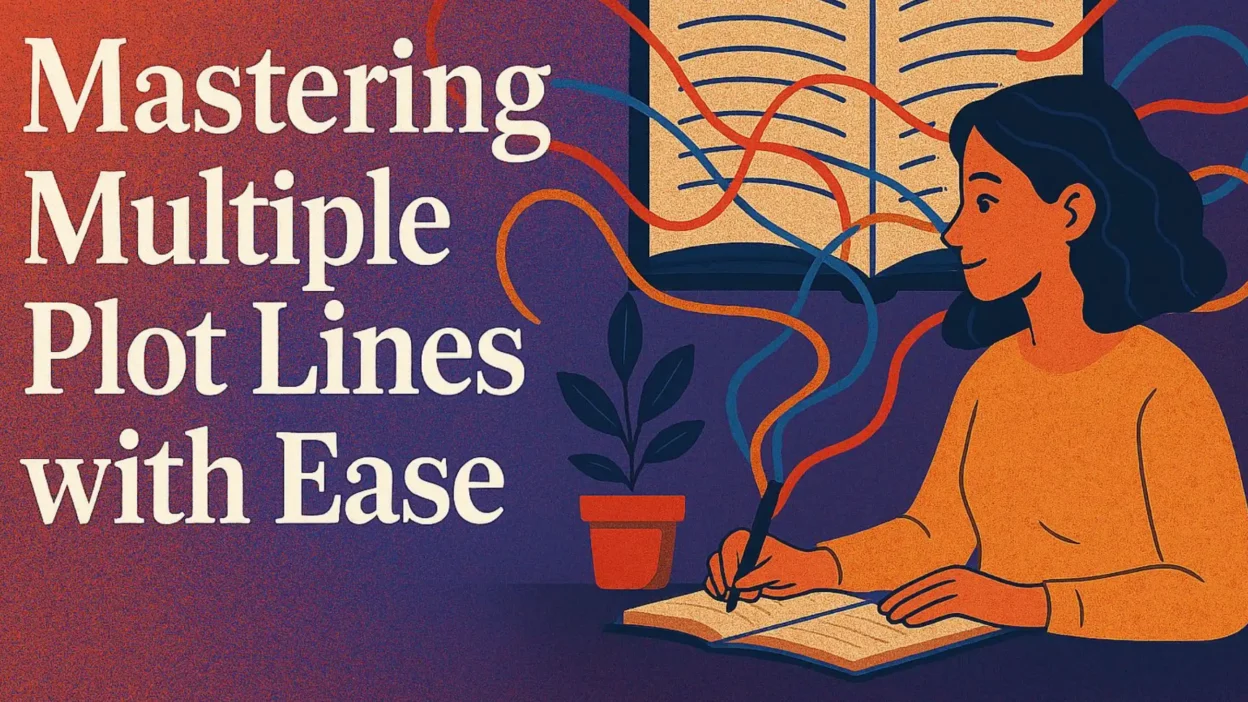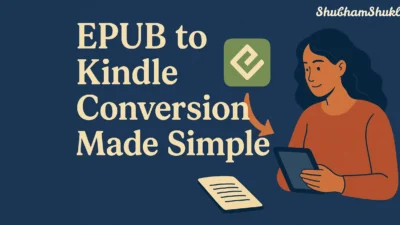Ever found yourself knee-deep in a novel where the story zips between characters, time periods, or perspectives—and somehow, it just works? That’s the magic of multiple plot lines.
When done well, they add richness, depth, and emotional resonance to a story. When done poorly… Well, let’s just say we’ve all closed a book mid-chapter because it was too confusing to follow. So if you’re wondering how to write compelling fiction using multiple plot lines, this guide is for you.
Whether you’re working on a dual-POV romance or a complex fantasy epic, we’ll walk through how to make every thread count—and connect.
You may also like: Is the Antagonist the Bad Guy? Let’s Talk About It
Why Writers Love Multiple Plot Lines
At its core, a novel is about more than one thing happening. That’s why multiple plot lines are such a powerful storytelling tool. They let you:
- Explore characters from different angles
- Deepen emotional stakes
- Build tension by switching perspectives
- Create powerful contrasts or echoes between story arcs
Take The Night Circus by Erin Morgenstern. You’ve got Celia and Marco’s magical duel, layered with the love story, layered again with the eerie, nonlinear timeline.
Each line adds something fresh—and by the time everything converges, you feel like you’ve lived inside a world that’s far bigger than just one character’s view.
You may also read: The Secret Power of Slow Burn Pacing in Storytelling
How to Structure Multiple Plot Lines (Without Losing Your Mind)
Writing multiple plot lines isn’t about throwing spaghetti at the wall and hoping it sticks. You need structure, even if you’re a pantser at heart.
Here are a few tried-and-true tips:
1. Outline (Even a Loose One Helps)
Map out each plot line on its own first. What’s the conflict? Who’s involved? How does it begin, peak, and resolve? Then look at how they intersect—or how they should. Visual tools like color-coded sticky notes or timeline spreadsheets work wonders here.
2. Tie Each Plot to a Central Theme
Even if you’re writing wildly different arcs (say, a mother-daughter drama alongside a political thriller), they should echo the same emotional or thematic core. Think Station Eleven—its fractured plot lines all revolve around survival, art, and what connects us as humans.
3. Balance Screen Time
Readers form emotional connections with characters. If you spend too long away from one plot, they’ll forget or stop caring. A good rhythm (alternating chapters or scenes) keeps each thread alive.
Weaving Plot Lines Together So They Actually Work
This is where the real craft comes in. It’s not just about having multiple plot lines—it’s about making them talk to each other.
Ask yourself:
- Do the characters from different plots influence one another?
- Do their actions ripple across timelines or relationships?
- Are there thematic or symbolic links?
Big Little Lies by Liane Moriarty does this brilliantly. At first glance, each woman has her own arc. But the schoolyard drama, the domestic abuse subplot, and the murder mystery all intertwine emotionally—and then literally, in the explosive ending.
You don’t have to force characters to meet in the same room. But readers should feel like every plot line is part of the same heartbeat.
You may also like: The Best Plot Twists in Fiction Writing: How to Shock, Satisfy, and Stay Memorable
In My Own Experience, I Found That…
…trying to juggle multiple plot lines without a clear emotional anchor made my story feel scattered. I once wrote a novel with three POV characters: a thief, a noblewoman, and a disgraced knight.
Each arc had promise, but they felt like three different books until I sat down and asked, “What are they all really struggling with?” The answer was shame—how it isolates us, and how redemption can take many forms. Once I knew that, everything started clicking.
My advice? Before you write your first scene, ask yourself what ties every plot line together on a human level. That thread will carry you—and your readers—through.
Avoiding Common Pitfalls with Multiple Plot Lines
Let’s be honest: not every story needs multiple plot lines. And when they’re done poorly, they can hurt more than help.
✘ Pitfall 1: Confusing Structure
Switching too often or without clear signposts can disorient readers. Use chapter headings, dates, or character names to orient your audience. Don’t make them work harder than they need to.
✘ Pitfall 2: Uneven Emotional Weight
If one plot line is gripping and another is filler, readers will lose interest. Either trim the weaker thread or raise its stakes. Every arc should matter.
✘ Pitfall 3: Plotlines That Don’t Resolve
There’s nothing worse than investing in a subplot only for it to vanish without closure. Even if the resolution is subtle, make sure you close every door you open.
Examples of Books That Nail Multiple Plot Lines
Need inspiration? Here are a few books that masterfully juggle multiple plot lines:
- The Time Traveler’s Wife – Combines nonlinear timelines with dual POVs to build emotional resonance.
- Homegoing by Yaa Gyasi – Follows two lineages across generations, each plot line a window into a bigger historical narrative.
- The Secret History by Donna Tartt – Weaves past and present timelines with a psychological twist, slowly revealing layers of the central mystery.
Each of these novels uses multiple plot lines not as decoration—but as the engine that drives the emotional and narrative stakes.
You may also read: Linear vs Nonlinear Storytelling Examples: Which Style Tells the Stronger Story?
Final Thoughts: Writing a Story That’s Bigger Than One Arc
At the end of the day, writing with multiple plot lines isn’t about being clever—it’s about creating a fuller, deeper world. If you’ve got several characters itching to speak, or themes that deserve more than one lens, go for it. Just remember: connection is key. Every plot line should serve the heart of your story, not distract from it.
You don’t have to be perfect the first time. That’s what rewrites are for. But with a little planning, awareness, and heart, your multi-threaded novel can sing in harmony.
FAQ: Writing with Multiple Plot Lines
Q1: How many plot lines are too many?
It depends on your genre and word count, but generally 2–3 major plot lines are manageable for most readers.
Q2: Should each plot line have its own arc?
Yes! Each one should rise, climax, and resolve—even if some arcs are quieter or more emotional than action-packed.
Q3: Can I add new plot lines during revision?
Absolutely. Sometimes a subplot reveals itself later in the drafting process. Just be sure it integrates well.
Q4: What’s the difference between subplots and multiple plot lines?
Subplots usually support the main story; multiple plot lines often carry equal weight or run parallel before intersecting.



